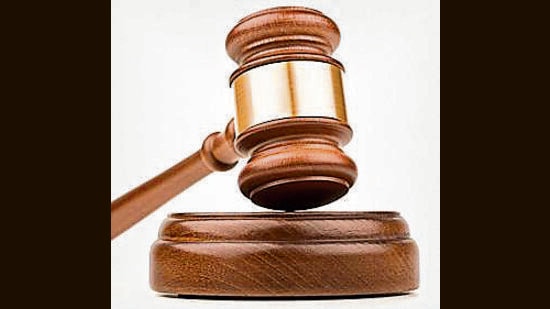Nearly 50% of complaints filed with rights body in Haryana in last six years against police: HHRC data
The data of the Haryana Human Rights Commission (HHRC) revealed that at least 45% (8,367) cases of the total 18,659 received between January 1, 2016 and November 30, 2022 were against the police
: Out of the total number of complaints received by the rights watchdog in Haryana in the last six years, nearly 50% are against the police, according to an official data released on Monday.

The data of the Haryana Human Rights Commission (HHRC) revealed that at least 45% (8,367) cases of the total 18,659 received between January 1, 2016 and November 30, 2022 were against the police. About 6% cases filed were related to women and nearly 1% to children, while the disposal rate of the cases stood at 96%.
With over 40% complaints pertaining to police, the HHRC registered over 200 cases a month in 2021 and 2022, according to the data HHRC chairperson justice SK Mittal (retd) released on Monday to mark the 10th year of the inception of the rights body.
“We have disposed of 17,976 cases and 683 cases are pending,” Mittal said, adding that even though nearly 50% of the total cases HHRC deals with pertain to the police, half of them turn out false.
Even when the Covid-19 was disrupting normal life and forcing public to stay indoors, there was no letup in the number of fresh petitions Haryana Human Rights Commission (HHRC) was receiving during the first two years of the pandemic.
The HHRC registered 2,257 fresh cases till October this year, against 2,737 cases last year, up from 2,501 in 2020.
However, no fresh case was listed nor disposed of in April 2020 during the nationwide lockdown.
In a decade of its inception and among the cases the rights body registered as well as disposed of included 32 cases related to judiciary, five cases regarding mafias/underworld, and 13 cases about defence forces.
The majority of the cases filed since January 2016 came from Faridabad (1,609), Gurugram (1,549), Panipat (1,524), Sonepat (1,249), Hisar (1,155), Rohtak (951) and Sirsa (915).
Justice Mittal, who served in the Punjab and Haryana high court and retired as chief justice of Rajasthan high court, said fresh complaints were listed for hearing within a week. He said out of the 23,192 cases filed in the last 10 years, as many as 22,454 have been decided with 97% disposal rate.
Rise in custodial deaths, says HHRC chief
The number of custodial deaths either in prison or in police stations is on the rise in Haryana, justice Mittal said.
Following the recommendations of the HHRC, the Haryana government has framed a policy under which ₹ 7.5 lakh and ₹ 5 lakh compensation is paid to the next of the kin or legal heir of prisoners on account of unnatural deaths due to quarrel among prisoners, torture by prison staff, negligence in duty by officers/officials, or due to negligence by medical officer.
Till September 2022, ₹ 1.87 crore has been given as compensation in cases related to judicial custody. The judicial inquiry is a must in custodial deaths, he said, adding the full Commission deals with the cases of custodial deaths.
“The National Human Rights Commission has adopted this policy and requested all the state Human Rights Commissions to formulate this policy on the lines of Haryana...This is a big achievement of HHRC,” said justice Mittal, flanked by members of the panel justice KC Puri (retd) and Deep Bhatia.
He said it was due to the directions of the HHRC that the state government increased the threshold of annual income to avail benefits under the BPL schemes to ₹ 1.80 lakh.
Child marriage under radar
Following media reports, the HHRC has also turned its gaze towards the issue of child marriage prevalent in areas bordering Rajasthan, besides Nuh, Fatehabad and Sirsa districts.
Underlining the need of making people aware about it, Justice Mittal said awareness drives were underway in the state.
As per the official data, the number of child marriage victims in Haryana has risen from 20 in 2019 to 33 in 2020. Last year, the state recorded 33 cases of child marriage.





